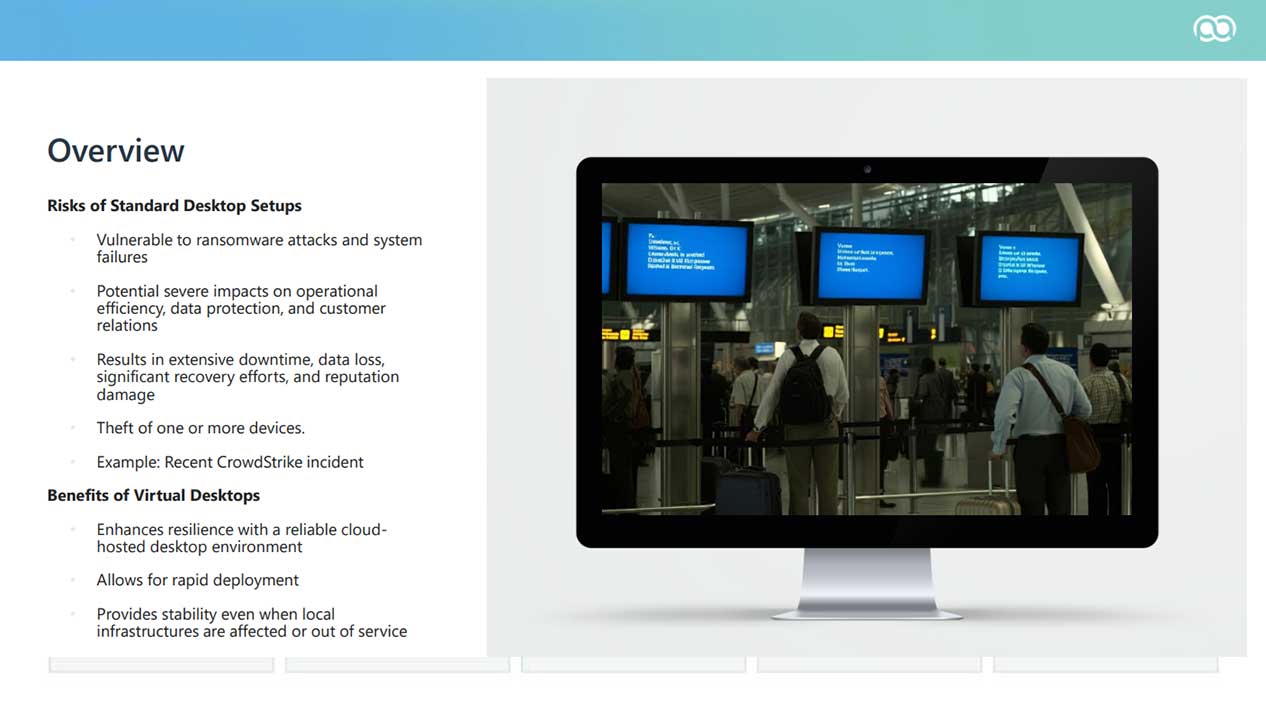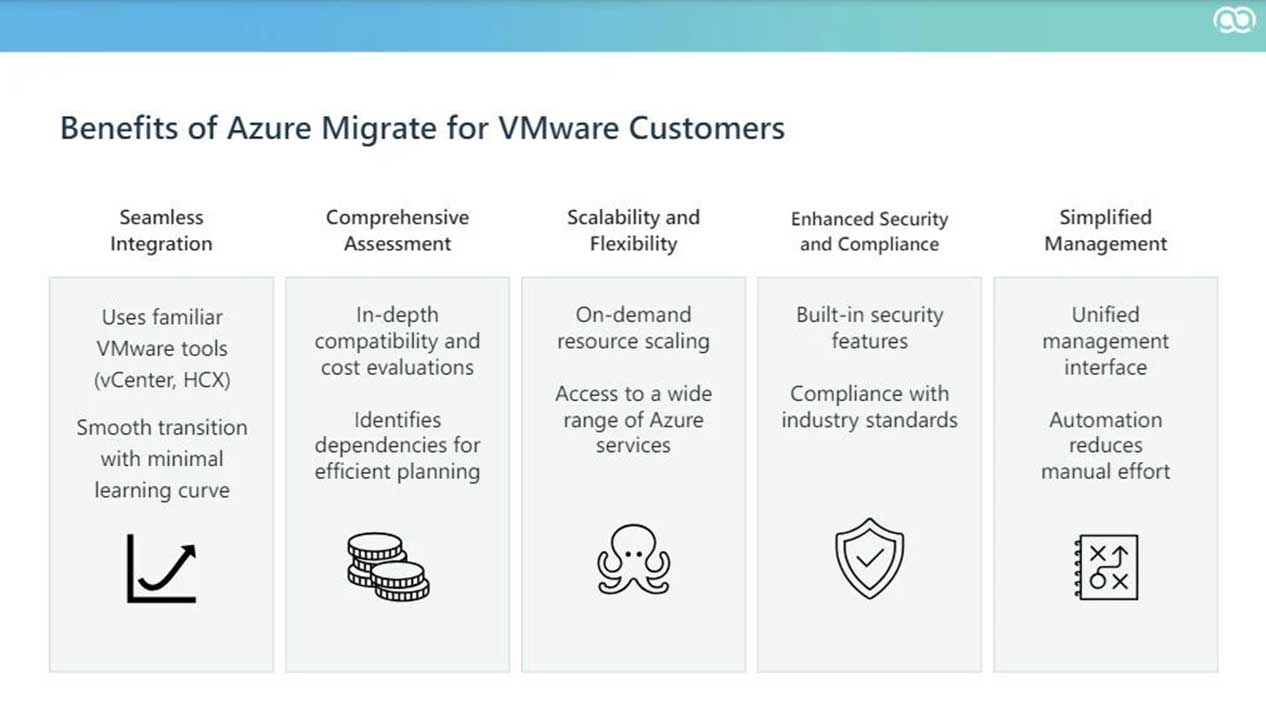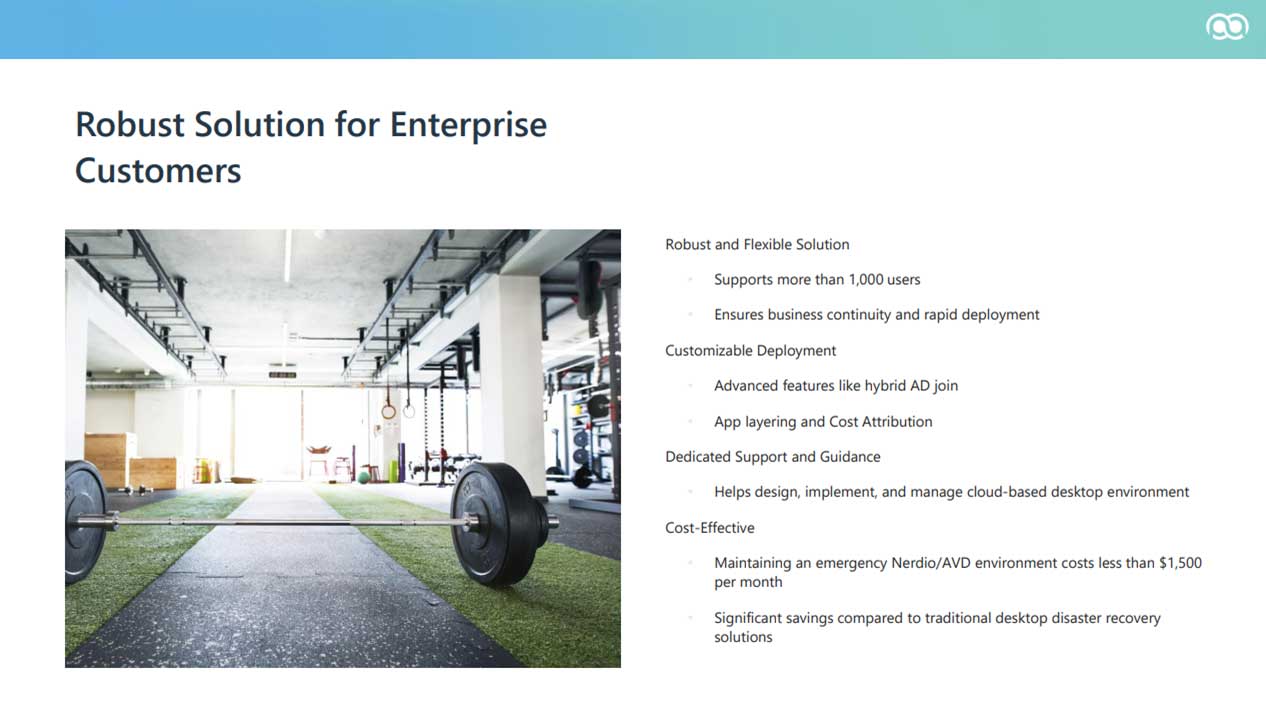Moving to AVD Part 3: VMWare Horizon to Azure Virtual Desktop (AVD)
With VMware’s recent acquisition by Broadcom, now is the ideal moment for organizations to reassess their Virtual Desktop Infrastructure (VDI) solutions. In a recent conversation, Greg, alongside Jim Spignardo, Strategic Solutions Consultant at ProArch, explored the numerous advantages of Azure Virtual Desktop (AVD). They discussed how AVD can help organizations save costs, scale effortlessly, enhance security, and integrate seamlessly with Microsoft services.
As organizations face increasing uncertainty in the tech landscape, it’s crucial to look for solutions that not only meet current needs but also set you up for future success.
Want to dive deeper? Watch the full discussion or keep reading to explore the benefits, challenges, and steps for making this important transition.
Overcoming VMware Challenges
For many organizations using VMware, the journey isn’t without its bumps. Managing virtual desktops can lead to increased downtime and user frustration. Integrating with existing infrastructure often proves to be a significant hurdle, causing unnecessary overhead and resource strain. By identifying these challenges, businesses can make informed decisions about their virtualization strategies and seek solutions that enhance both performance and user satisfaction.
1. Costly Hardware Investments
One pressing issue with VMware is the hefty upfront hardware investment required. Organizations must allocate substantial resources for servers, storage, and networking equipment, which can be daunting for smaller companies. Additionally, VMware’s shift to a subscription-based licensing model may compound costs, with bundled offerings like VMware Cloud Foundation known to spike prices by as much as 1200%.
2. Management Complexity
Managing VMware often feels like navigating a maze. The multi-layered virtualization environment adds complexity that can overwhelm IT teams. The need for specialized skills and extensive training strains resources, even with VMware’s recent attempts to simplify licensing and structure.
3. Scalability Challenges
Many organizations find that scaling with VMware is a challenge. The system can struggle to adapt to spikes in demand, which slows responsiveness to business needs. While VMware’s new licensing strategy aims for greater flexibility, limitations in scaling infrastructure can lead to additional costs or operational headaches.
Organizations really need to look at the long-term viability of Horizon View as a separate company. It's a great time to evaluate your options, such as Azure Virtual Desktop, as a more stable and future-proof offering.
4. Licensing Changes and Their Impact
Jim pointed out the significant shift from perpetual licenses to a subscription model in VMware products. This move could make Azure cloud solutions more appealing, depending on what organizations need. Subscription models are not new, but VMware’s bundling of solutions into offerings like VMware Cloud Foundation could lead to steep price increases.

But there’s a better way: Azure Virtual Desktop (AVD)
Azure Virtual Desktop (AVD), a solution that simplifies the management of virtual desktops while enhancing security and user experience. Transitioning to AVD can lighten the load on IT teams. Unlike VMware, which requires manual updates, AVD automates many tasks. This allows IT teams to focus on more impactful work instead of routine maintenance.
Comprehensive Assessment
With AVD, keeping virtual desktops secure and up to date is straightforward. It automates essential tasks such as updates and patches, alleviating common pain points for IT teams.

Scalability and Flexibility
The transition to a subscription-based licensing model for VMware products makes AVD an appealing choice. This model offers predictable costs and the flexibility to adjust usage as needed.
With AVD’s consumption-based pricing, organizations can scale resources based on user demand without incurring high upfront costs. As organizations strive to manage budgets more effectively, the financial implications of VMware’s pricing changes—potentially increasing costs by up to 1200%—may drive them to consider AVD as a more cost-effective and adaptable solution.
The Appeal of Subscription Licensing
The shift from perpetual licensing to a subscription model in VMware products makes AVD an attractive option. Subscription licensing offers predictable costs and the flexibility to adjust usage as needed. With AVD’s consumption-based pricing, organizations can scale resources based on user demand without incurring high upfront costs.
As organizations aim to manage their budgets more effectively, the financial implications of VMware’s pricing changes—potentially increasing costs by up to 1200%—could encourage them to consider AVD as a more cost-effective and adaptable solution.
Enhanced Security and Compliance
AVD not only simplifies management but also enhances security and compliance. By automating maintenance tasks, AVD significantly reduces the risk of vulnerabilities, ensuring that virtual desktops are protected without compromising operational efficiency.
Simplified Management
AVD reduces the complexity of managing virtual desktops. Its centralized management platform empowers organizations to oversee operations efficiently, freeing IT staff to focus on strategic initiatives rather than routine maintenance.
Ready to Scale Your Virtual Desktops?
With AVD, scaling is as easy as a few clicks. Forget about hefty hardware investments or worries about running out of resources. AVD is designed to grow with your business, effortlessly meeting your changing demands. Here are some of the tips for a successful AVD deployment.
If you’re exploring how to leverage Azure cloud services for your VMware workloads, consider options like Azure VMware Solution (AVS), Azure Migrate, and Azure Stack HCI. Each option serves different needs, so use this guide to compare them and find the best fit for your organization. ProArch is here as a VMware reseller and top Microsoft partner to help you navigate your choices. For more detail on your options check out our guide here.
Is AVD Truly Cost-Effective?
You might be wondering, “This all sounds great, but what about my budget?” Jim reassures us that robust disaster recovery solutions can be incredibly affordable. “Typically, it costs less than $100 a month to keep it idle if you should need it.”

One reason organizations are switching to Azure Virtual Desktop is the potential for cost savings. With traditional VDI solutions, you’re stuck with high upfront costs—servers, storage, data centers—plus ongoing maintenance and support.
With AVD, those costs shrink significantly. You only pay for the virtual desktops you actually use, without the burden of maintaining expensive infrastructure. Thanks to Azure’s pay-as-you-go model, you can easily scale your resources based on your business’s needs.
AVD and the cloud in general give businesses the ability to reduce overhead, scale resources up or down, and only pay for what they use. It’s an ideal setup for companies looking to cut costs while maintaining flexibility.
Moving from VMware to Azure Virtual Desktop (AVD) can feel like a big change, but taking it step-by-step, starting with a Proof of Concept (PoC), makes it much smoother. At ProArch, we’ve helped many organizations run PoCs to try out AVD in real-world situations. It’s a chance to see how well AVD fits with your current systems, how it handles performance needs, and how cost-effective it really is—without committing to a full rollout right away.
Thinking about making the switch?
ProArch is a top Microsoft Partner with advanced specialization in Azure. Our Azure Migration Services have helped hundreds of organizations successfully move to the cloud. Contact us.

Assistant Manager Content Parijat helps shape ProArch’s brand voice, turning complex tech concepts into clear, engaging content. Whether it’s blogs, email campaigns, or social media, she focuses on making ProArch’s messaging accessible and impactful. With experience in Oracle, Cloud, and Salesforce, she blends creativity with technical know-how to connect with the right audience. Beyond writing, she ensures consistency in how ProArch tells its story—helping the brand stay strong, authentic, and aligned with its vision.


